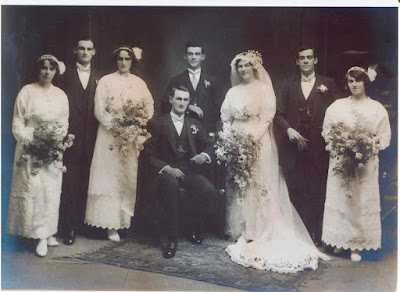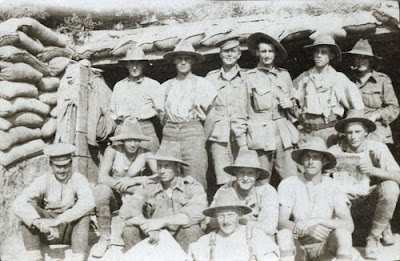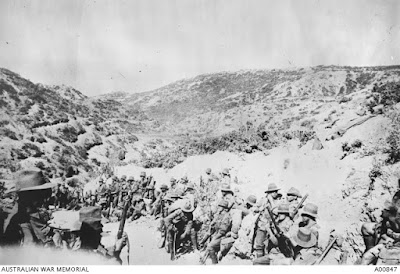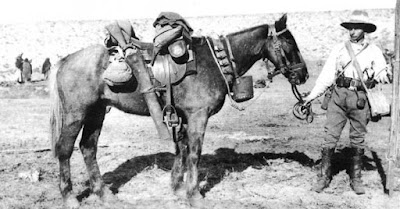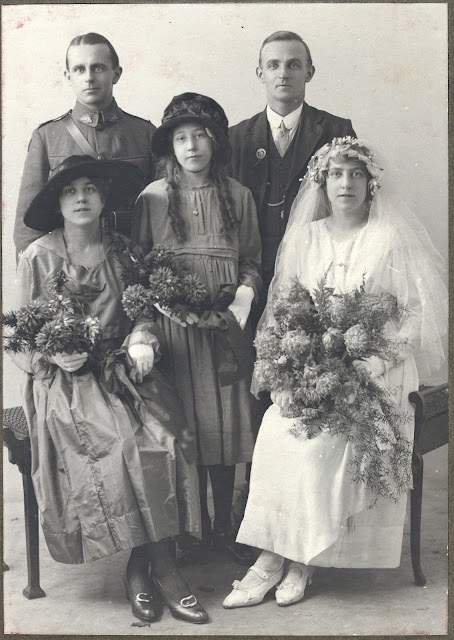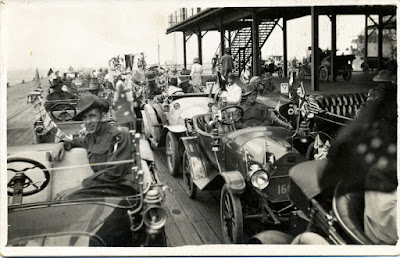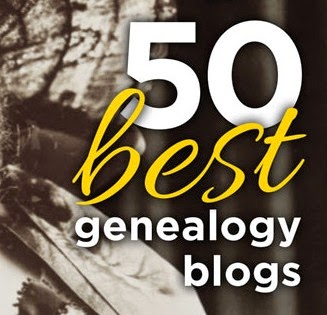While browsing through the B2455 file of
Harry Nightingale Kersey of Moonee Ponds, I noticed a note written at Broadmeadows to the effect that Kersey had married the day before, and another Attestation had been made up showing his new next of kin. I noticed that the day of the marriage, 16 July 1915, was the day before Harry embarked on the Orsova with the AAMC Hospital Transport service on 17 July 1915.
I idly wondered whether the last minute marriage had lasted the distance, and went to Ancestry for a quick result. Of course there is never a quick result. All of the available trees listed a different, presumably second wife, not the Eva Evelyn mentioned in the B2455. I went to the online index of BDM for Victoria and found that Harry Nightingale Kersey had married Eva Evelyn Swindells in 1915. By the same means I discovered Eva had died in 1931. Turning to Trove with the intention of seeing whether there had been children of the marriage, I found that the death notices and 'In Memoriam's' indicated there had been no children. But I did find that Harry had been a devoted husband.
KERSEY. — In loving memory of my dear wife,
Eva Evelyn, who passed away on 30th No
vember, 1931. Sadly missed.
— Inserted by her loving husband, H. N.
Kersey.
KERSEY.— In loving memory of my dear
auntie, who passed away on the 30th No
vember, 1931. Peacefully sleeping.
—Inserted by her loving niece, Florrie.
KERSEY. — Our loved and devoted friend,
Eva E., dear Auntie Birdie to Jean and
Gwenda, who passed away after long suf
fering on 30th November, 1931.
Sadly missed.
With love to-day and through the long to
morrow
We will remember you.
— Inserted by Mrs. Williams and family, 22
Orlando-street, Hampton.
Family Notices (1932, November 30). The Age (Melbourne, Vic. : 1854 - 1954), p. 1. Retrieved August 26, 2016, from http://nla.gov.au/nla.news-article204304496
Harry put an
In Memoriam in the paper in the next two years. In 1936, five years after Eva's death, he remarried.
Thinking I would like a photo of him, I did a general Google on his name, and to my surprise up popped the website at the top of this post, the
South Australian Red Cross Information Bureau, 1916-1919.
This came up because Harry had made a witness statement about a South Australian comrade in the 5th Field Ambulance unit who had been killed by shellfire. The witness statement was contained in the usual
Australian Red Cross Wounded and Missing Enquiries Bureau Correspondence available through the Australian War Memorial website. The South Australian Information Bureau has a different set of documentation held at the State Library of South Australia, and the volunteers who prepared and digitised the records also indexed the other names, particularly witness statements. Otherwise I would never have found Harry's witness statement.
So while the records pertain particularly to South Australian soldiers, there is the chance that a soldier from another state was a witness for an enquiry made on behalf of South Australians, and would be worth a look. Witness statements are a useful eye-witness account of the conditions at the time, and may be the only contemporary information you will find.

